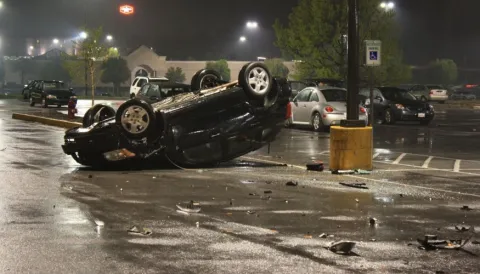APSC student wins oral presentation award at Injury Biomechanics Symposium

M’Beth Schoenfeld, a second-year MASc student in UBC's School of Biomedical Engineering, was awarded the Dr. Margaret H. Hines Award for best oral presentation at the 2018 Injury Biomechanics Symposium hosted by The Ohio State University. Now in its fourteenth year, the annual event aims "to stimulate and reward strong injury biomechanics research among students and recent graduates."
Schoenfeld, who is co-supervised by UBC mechanical engineering professor Peter Cripton, presented on a study where she and her team measured the vertebral and muscular responses of a live human subject as he was taken from an upright seated position into an upside-down free-fall. Accomplished using a custom inversion device built by Schoenfeld and her team, the study was an attempt to recreate the conditions of a rollover — a crash where a vehicle tips onto its side or roof — prior to a head-first impact.
After the free-fall, the study participant was safely decelerated to rest and returned, unharmed, to an upright position.
"My research focuses on cervical spine injuries in motor vehicle rollovers, which make up just three per cent of motor vehicle crashes yet account for one-third of motor vehicle fatalities," says Schoenfeld. "Existing cervical injury models don't reflect the injury distribution reported clinically. My goal is to improve them using experiments that better represent a rollover environment."
Featuring 30 student presenters from 14 universities this year, the Injury Biomechanics Symposium offers a venue where young researchers can receive feedback and support for their work, as well as network with industry partners and sponsors.
More information about Schoenfeld's project, titled "Cervical vertebral kinematics and neck muscle responses during an inverted free fall simulating a vehicle rollover: pilot data from an in vivo human subject experiment," and the other symposium presentations are available on the Injury Biomechanics Research Center website.